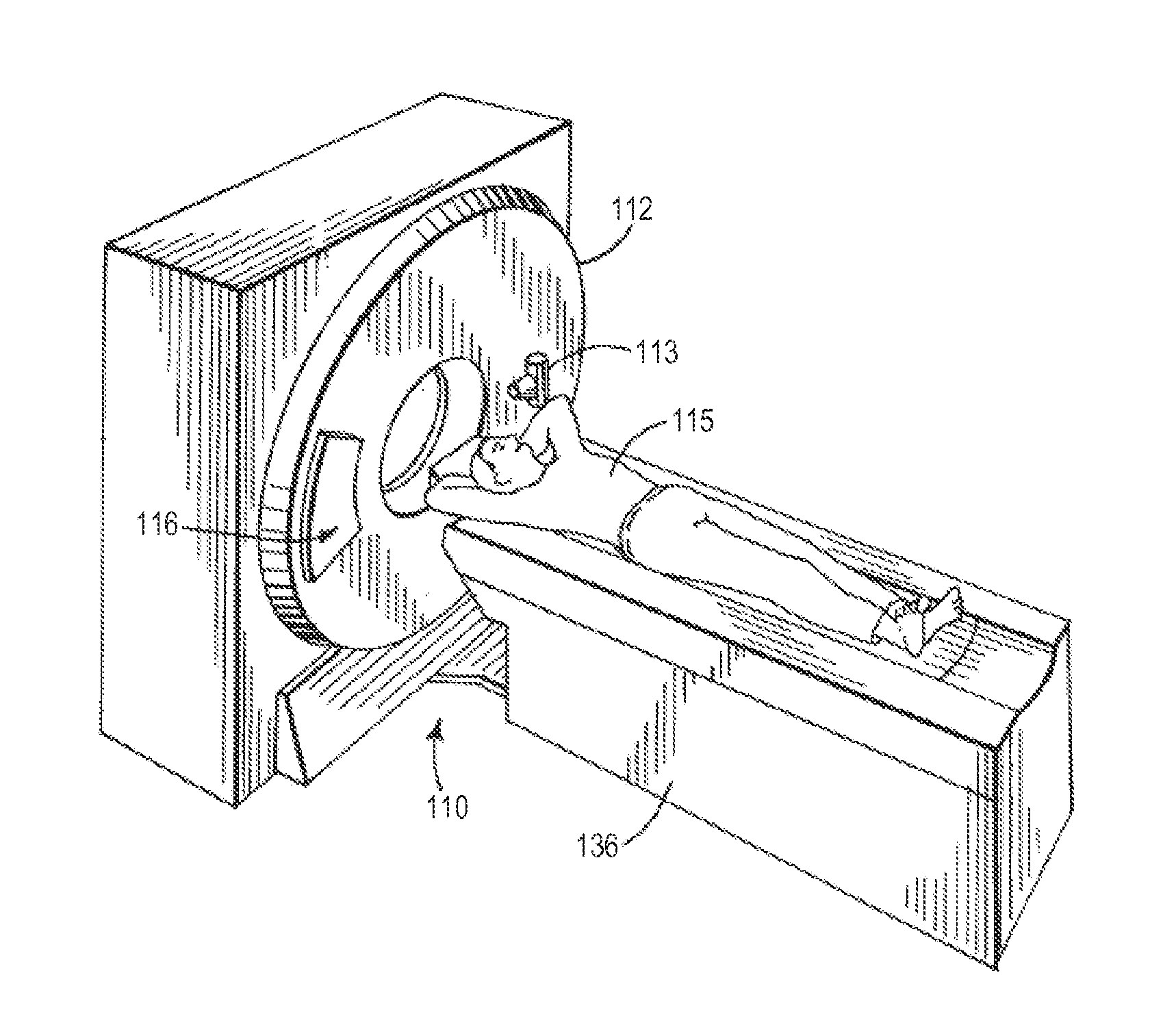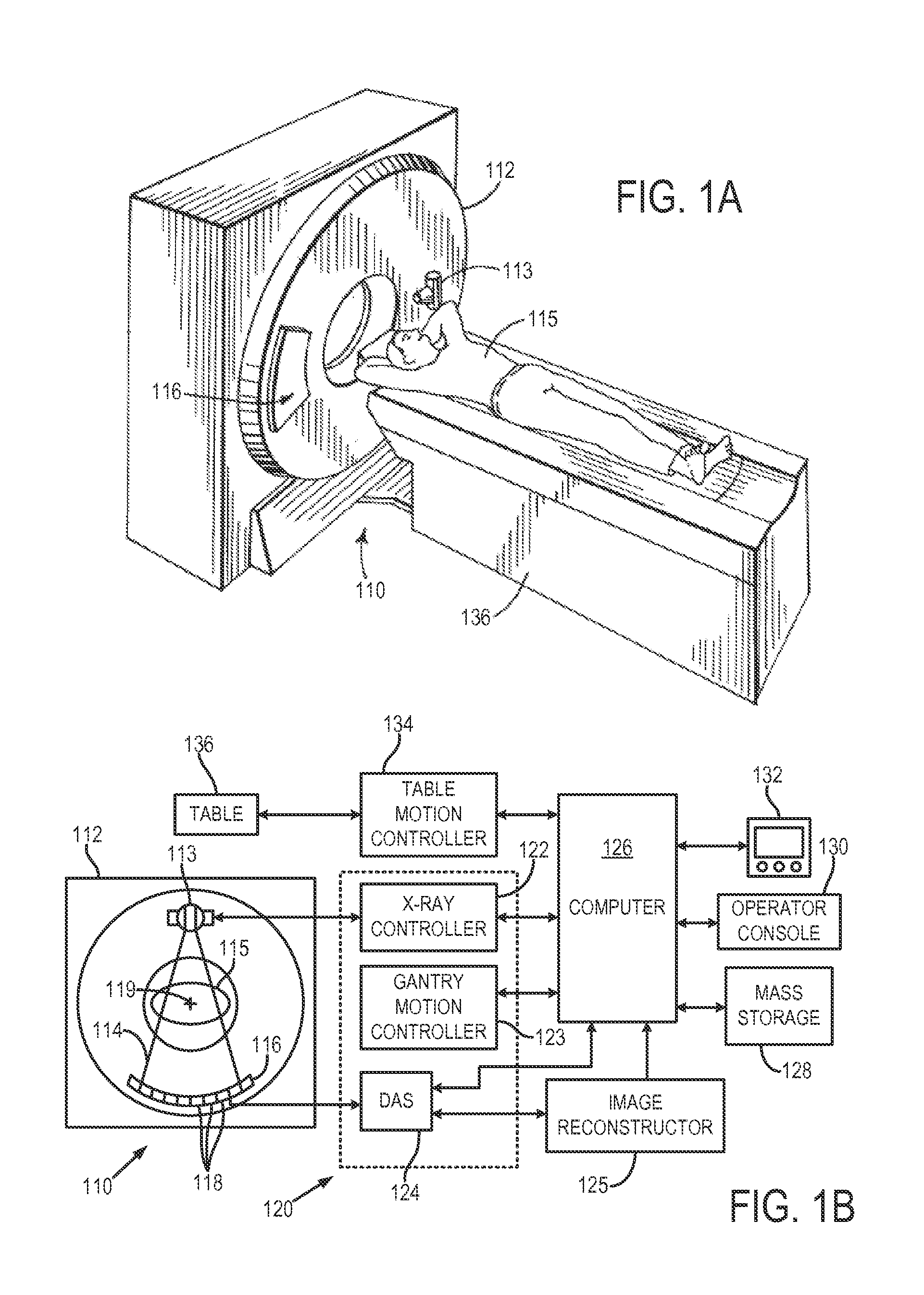System and Method for Denoising Medical Images Adaptive to Local Noise
- Summary
- Abstract
- Description
- Claims
- Application Information
AI Technical Summary
Benefits of technology
Problems solved by technology
Method used
Image
Examples
Embodiment Construction
[0020]With initial reference to FIGS. 1A and 1B, a computed tomography (CT) imaging system 110 includes a gantry 112 representative of at least a “third generation” CT scanner. In the illustrated example, the gantry 112 has a pair of x-ray sources 113 that each project a fan beam or cone beam of x-rays 114 toward a detector array 116 on the opposite side of the gantry 112. The detector array 116 is formed by a number of detector elements 118 that together sense the projected x-rays that pass through a medical patient 115. During a scan to acquire x-ray projection data, the gantry 112 and the components mounted thereon rotate about a center of rotation 119 located within the patient 115 to acquire attenuation data.
[0021]The rotation of the gantry 112 and the operation of the x-ray source 113 are governed by a control mechanism 120 of the CT system 110. The control mechanism 120 includes an x-ray controller 122 that provides power and timing signals to the x-ray sources 113 and a gant...
PUM
 Login to View More
Login to View More Abstract
Description
Claims
Application Information
 Login to View More
Login to View More - R&D
- Intellectual Property
- Life Sciences
- Materials
- Tech Scout
- Unparalleled Data Quality
- Higher Quality Content
- 60% Fewer Hallucinations
Browse by: Latest US Patents, China's latest patents, Technical Efficacy Thesaurus, Application Domain, Technology Topic, Popular Technical Reports.
© 2025 PatSnap. All rights reserved.Legal|Privacy policy|Modern Slavery Act Transparency Statement|Sitemap|About US| Contact US: help@patsnap.com



